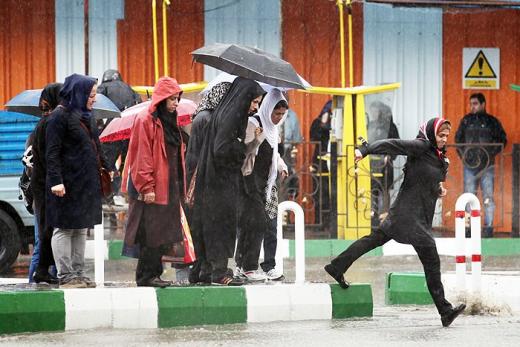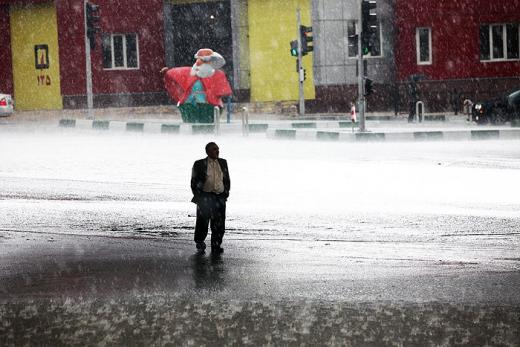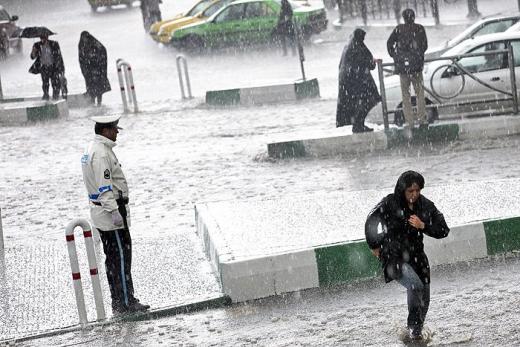"A lot of women were forced to break the law and walk barefoot with their pants rolled up to their knees"
Kianouche Amiri, 33, lives in Tehran. He was on his way to work when the flooding began.
Last Sunday began with sunny skies, but at around noon, the weather started to turn for the worse. In the beginning it seemed like it was nothing to worry about, but gradually the rain began to intensify and water levels began to rise rapidly. In less than an hour, both people and cars were immobilised by the water. I was about 10 minutes away from my office, and I had to take off my shoes and hike up my pants to reach my workplace. The worst was that there were a number of girls who were forced to walk barefoot with their pants rolled up to their knees, which goes completely against a law that requires women to cover themselves from head to toe or risk being fined. But the situation forced a lot of women to break the law. There were some who took advantage of the situation to 'passively' taunt the police, who were also impeded by the heavy rainfall and therefore rendered unable to react."The rails looked more like a river than train tracks"
The subway was hit hard by the storm. There were a few stations where the water rose all the way up to the subway's entrance. Even in others where the flooding wasn't as bad, the rails still looked more like a river than train tracks. Water flowed in rivulets through the hallways onto the rails and the ceiling had collapsed in a number of places, allowing mud to run through. Traffic was seriously delayed on a few lines for a couple days after the flooding was over, and didn't resume normal service until the middle of the week.
The day of the storm, I wasn't [sic] able to work in the morning because the electricity shorted. I had to wait for the flooding to go down before finally being able to take a taxi home at around 9 pm. The cost of a fare had tripled, even quadrupled in some cases. People here are outraged with the authorities because they weren't prepared for an storm of this magnitude. Most of the criticism has been targeted at how the subway was built. Local authorities have pointed their finger at the city government, which has in turn blamed higher powers for failing to have provided the capital with sufficient funds to secure the subway in the event of sever weather.








But I kind of want too. What are so bad about feet to Islam? Is it because they touch the ground and therefor impure, and women's feet especially so?